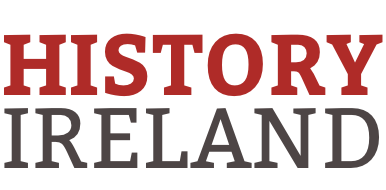By Lar Joye

Irish and Irish-Americans formed the 500-strong Irish Transvaal Brigade, led by Irish-American Col. John Blake, with John MacBride as his second in command. In the early part of the war Blake’s men were principally responsible for guarding Boer artillery, including one of the giant artillery pieces known as ‘Long Toms’. At this time they fought other Irishmen who were serving in the British Army in Irish regiments such as the Royal Dublin Fusiliers. Back in Ireland, Irish nationalists campaigned to halt the war in South Africa, distributing pins and badges. In addition to sending men to fight with the Boers, nationalists in Ireland tried to persuade young men not to enlist in the British Army. Celebrities such as Maud Gonne addressed large rallies to show support for the Boers in their war against British imperialism. She later presented a flag to the Irish Brigade, now in the collections of the National Museum and recently conserved by the team at NMI Conservation, Letterfrack. (See Letters, p. 13.)
Dr Michael Walsh from Kilmallock, Co. Limerick, travelled to South Africa to join a proposed Irish Transvaal Ambulance Corps. This unit never reached the theatre of war, so Walsh joined a French ambulance unit. Eventually he became the medical officer of the First Irish Transvaal Brigade, treating wounded soldiers from both sides. Dr Walsh brought home the objects pictured here as souvenirs of his time with the Boers.
After the surrender of the Boers, men of the Brigade returned to Ireland, often bringing back weapons, such as the German Mauser carbine (see Letters, p. 13) that was captured by the British during the 1916 Rising. It is inscribed with the distinctive profile of Transvaal President Kruger. In 1903 Major John MacBride married Maud Gonne and, like other veterans of South Africa, he used his combat experience during the Rising, serving with Thomas MacDonagh in Jacob’s factory.
Lar Joye is Heritage Officer, Dublin Port.
FURTHER READING
McCracken, ‘MacBride’s Brigade in the Anglo-Boer War’, History Ireland (Spring 2000).
